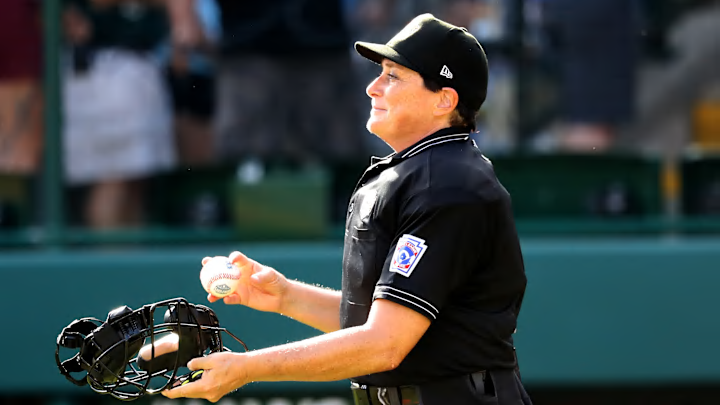The Little League World Series is officially underway, as some of the best young baseball players in the country descend on Williamsport, Pa., in order to take part in one of the game’s most storied traditions. Every year, this tournament introduces us to moments and names that capture our imaginations overnight, and there’s no telling which of them might be gracing Major League fields one day.
But while the LLWS is the essence of baseball, the game does look a little bit different than what you’re used to watching in MLB every night. Some of those changes are what you might expect given that these are kids we’re talking about. Some of them are a bit more interesting, and Rob Manfred might need to start taking notes. Here’s a quick rundown of how the game will be played in Williamsport.
For more news and rumors, check out MLB Insider Robert Murray’s work on The Baseball Insiders podcast, subscribe to The Moonshot, our weekly MLB newsletter, and join the discord to get the inside scoop during the MLB season.
What is the mercy rule in the LLWS?
Technically, it's mercy rules — plural. There are two relevant rules regarding scoring margins at the Little League World Series. Rule No. 1: If, at the end of three innings (or two and a half innings, if the home team is ahead), one team is winning by 15 runs or more, the game is called and the winning team is awarded with a victory. Rule No. 2: If, at the end of four innings (or three and a half innings, if the home team is ahead, one team is winning by 10 runs or more, the game is called and the winning team is awarded with a victory.
Those rules apply to every game in the competition at Williamsport, at every stage in the tournament. They've even helped decide a champion: The 2022 title game was called after Hawaii built a 13-3 lead over Curacao in the bottom of the fourth. (Hawaii won four of its six games that year via mercy rule.)
Little League baseball pitch count limits, explained
Pitching is dangerous enough for adults. So it’s no surprise that Little League goes to great lengths to avoid putting undue pressure on the arms of 10- to 12-year-olds in the hopes that everyone can compete as safely as possible. There are a series of guidelines in place to prevent managers from overusing any particular pitcher, and to ensure an adequate amount of rest between appearances.
First off, a blanket rule: No pitcher at the LLWS is allowed to throw more than 85 pitches in a single game (or a single day, if there are multiple games taking place on the same day). From there, how many pitches a player is allowed to throw depends on when they last took the mound.
- 1-20 pitches: 0 days rest needed
- 21-35 pitches: 1 day of rest needed
- 36-50 pitches: 2 days of rest needed
- 51-65 pitches: 3 days of rest needed
- 66 or more pitches: 4 days of rest needed
Players who have caught at least four innings in a given game are not allowed to pitch.
Why can't Little League players lead off the base?
You might have noticed that runners in Williamsport stay attached to the base while the pitcher is winding up rather than taking leads like they do in the Majors. The reason why comes down to the different dimensions of a Little League field: It is, for obvious reasons, much smaller than a big-league diamond, with the mound 46 feet away from home and just 60 feet between bases.
If runners were allowed to take leads and start running when the pitcher began their wind-up, steals would be all too easy. So instead, runners have to keep one foot on the base, and aren’t allowed to leave until the pitch crosses home plate. (There is a little bit of leeway given here, but not much.)
How mandatory play rule could change baseball
Little League has always been committed to ensuring that everyone has the chance to play, no matter how big the stage or how high the stakes. Previously, mandatory play referred to a series of requirements around how many players on a given roster had to see the field and by what point in the game. Now, though, things are much simpler.
Say hello to the continuous batting order: All available, eligible players (between 12 and 14, depending on the team) are ordered in a lineup, and that batting order will be in use throughout the game. There are no pinch-hitters and no mandatory substitutions; instead, everyone in uniform is guaranteed to get at least one at-bat.
It would be a bit tougher with 26-man rosters, but it’s fun to imagine what it might look like for MLB to adopt a similar sort of rule. If the New York Yankees have both Giancarlo Stanton and Aaron Judge vying for DH at-bats, well, good news: Now they both can hit without one of them having to play the field.
